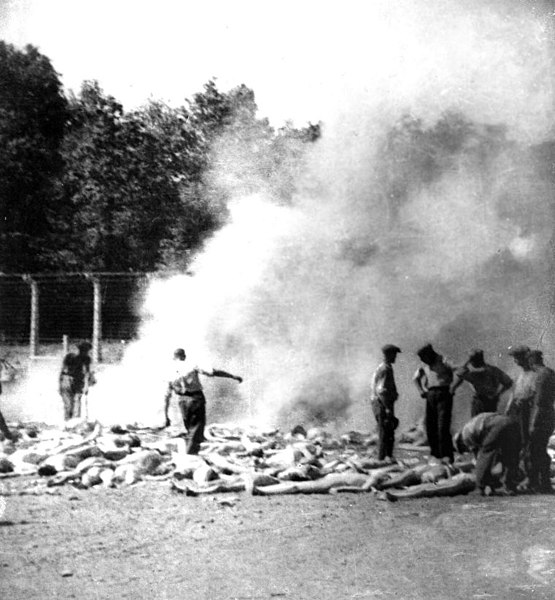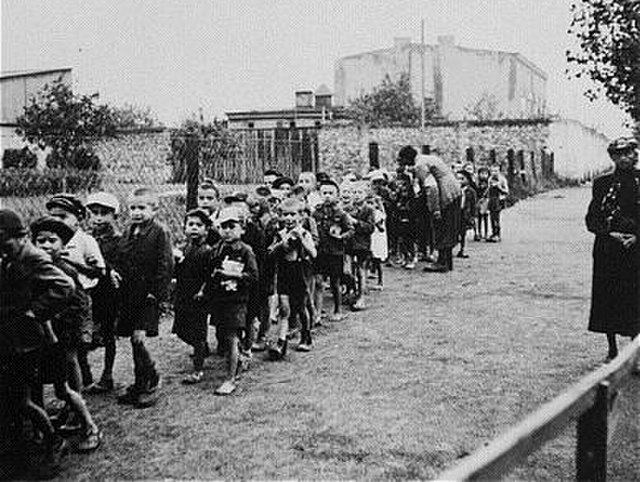Judge Zdzisław Łukaszkiewicz was a member of the Main Commission for the Investigation of Nazi Crimes in Poland upon the conclusion of World War II. The Commission has been replaced, upon the collapse of the Soviet-imposed communism in Poland, with the government-affiliated Institute of National Remembrance (IPN) serving similar purpose at present. Łukaszkiewicz was the author of the first historical research into the Nazi German extermination camps including Majdanek and Treblinka, on the territory of occupied Poland during the genocidal Operation Reinhard of the Holocaust.
Plan of Treblinka drawn in 1945 by surveyor T. Trautsolt; with the rubber stamp of the Main Commission for the Investigation of Nazi Crimes in Poland (or District Court, illegible), and signed by Łukaszkiewicz. Simplified version (with already typed legend) was published in his book titled Obóz straceń w Treblince by PIW, Warsaw, 1946.
Majdanek crematoria upon liberation, inside an already dismantled building
Nazi Germany used six extermination camps, also called death camps, or killing centers, in Central Europe during World War II to systematically murder over 2.7 million people – mostly Jews – in the Holocaust. The victims of death camps were primarily murdered by gassing, either in permanent installations constructed for this specific purpose, or by means of gas vans. The six extermination camps were Chełmno, Belzec, Sobibor, Treblinka, Majdanek and Auschwitz-Birkenau. Extermination through labour was also used at the Auschwitz and Majdanek death camps. Millions were also murdered in concentration camps, in the Aktion T4, or directly on site.
Extermination camp
Two of the four crematoria at Auschwitz II (Birkenau).
Members of the Sonderkommando burned the bodies of victims in the fire pits at Auschwitz II-Birkenau, when the crematoria were overloaded. (August 1944)
Jewish children during deportation to the Chełmno extermination camp






